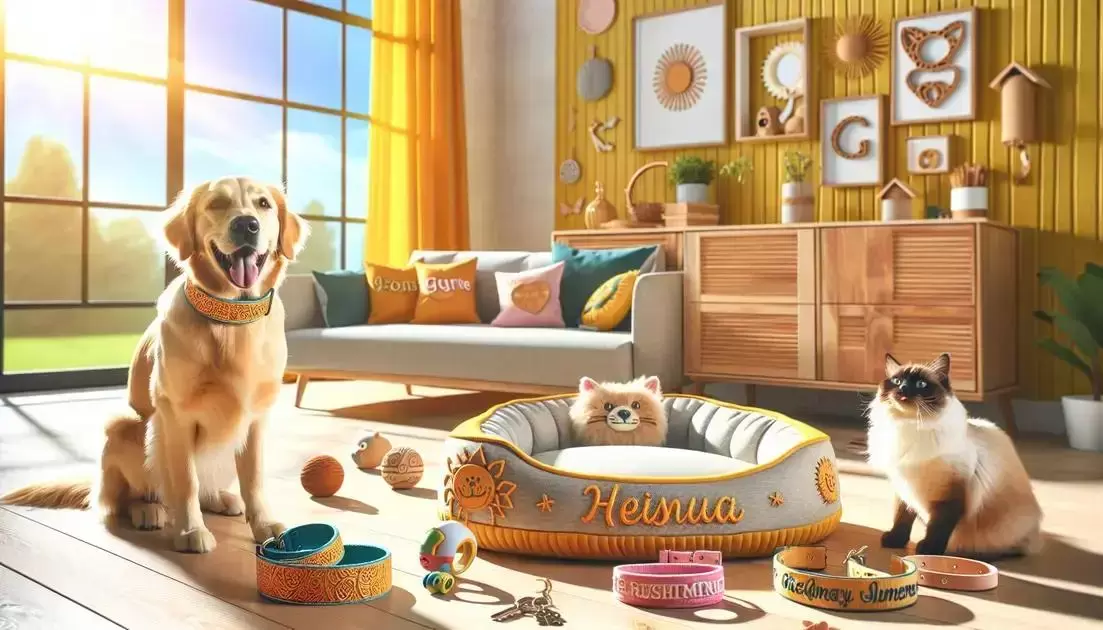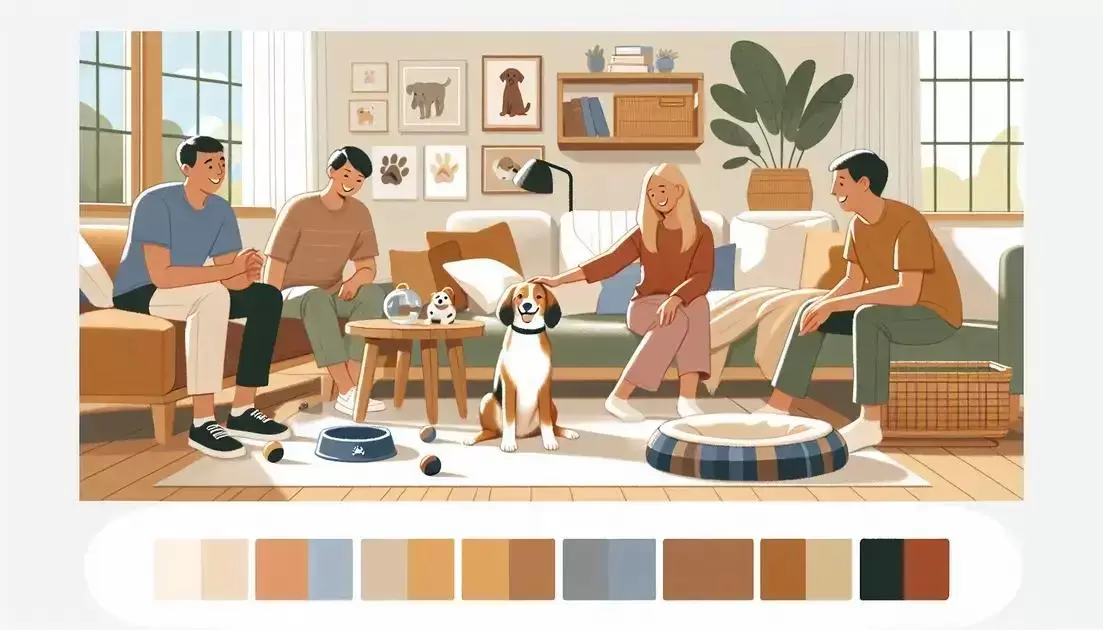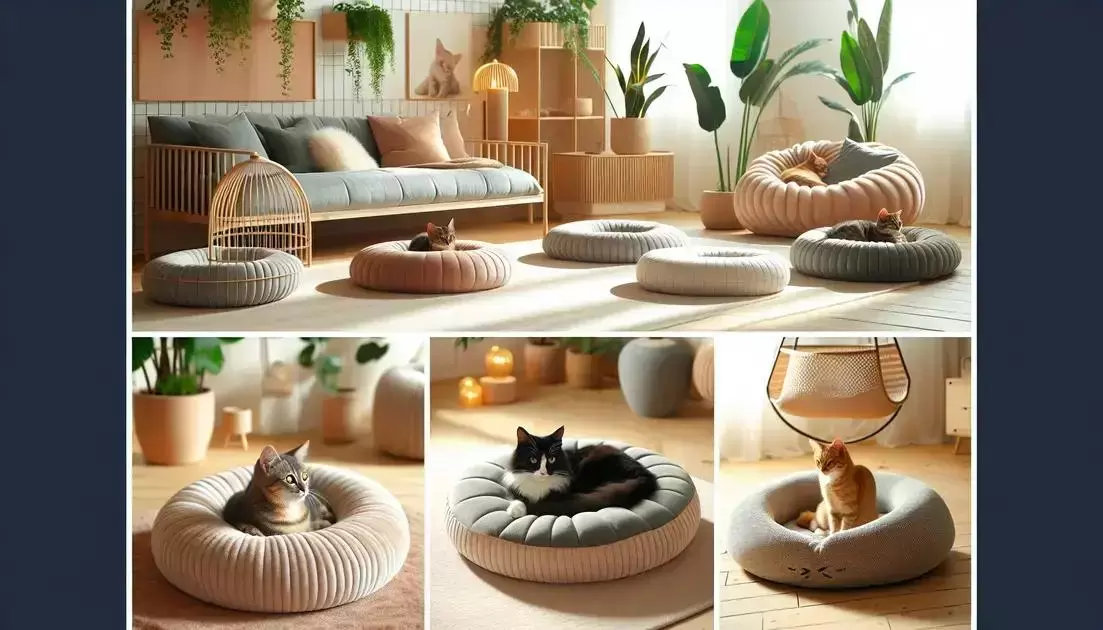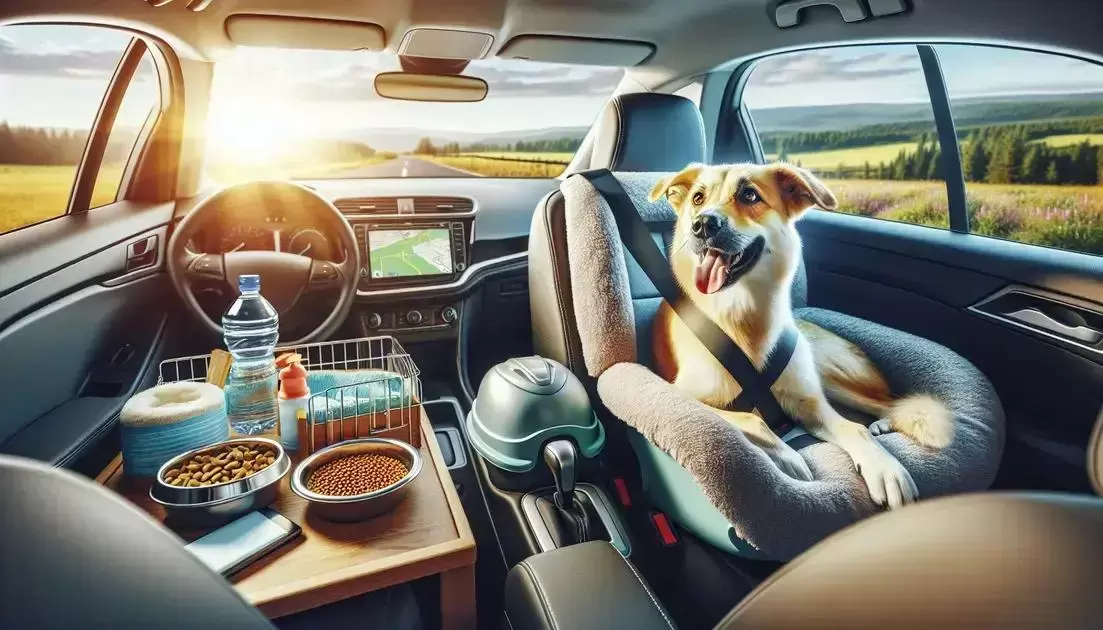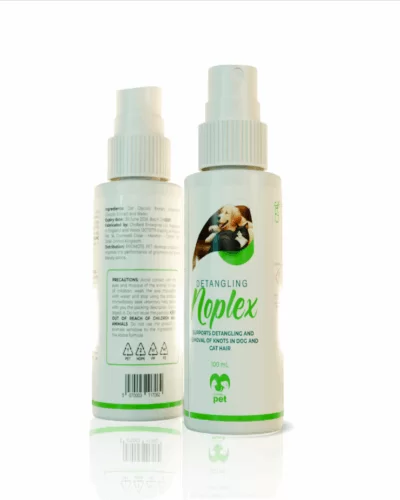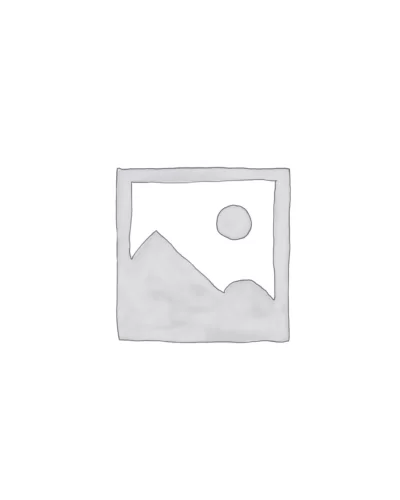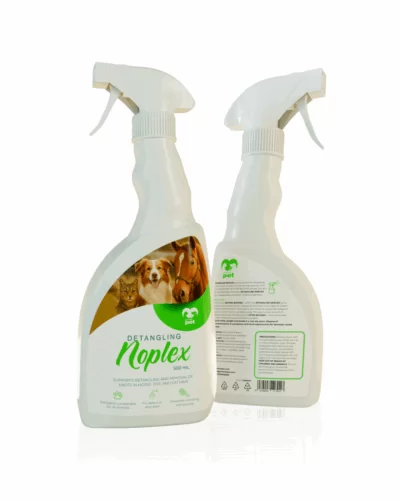Free delivery for orders over £45
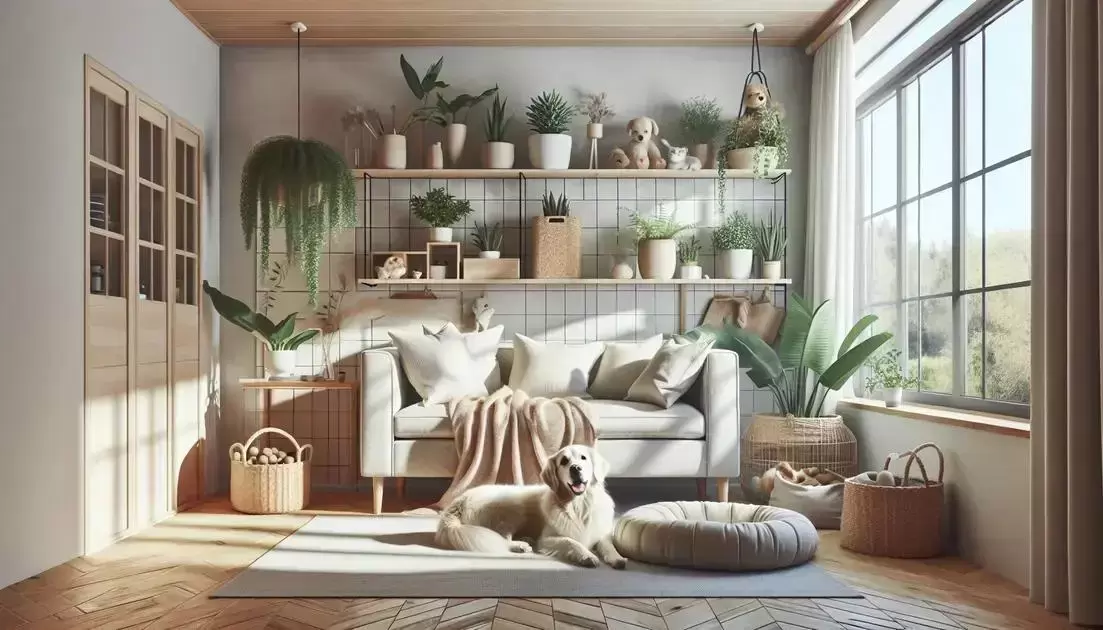
How to Create a Pet-Friendly Home Environment
Creating a pet-friendly home involves more than just providing food and shelter. Ensuring your home is safe for pets is crucial to their well-being. From avoiding toxic plants to configuring a pet-safe kitchen setup, your home’s environment plays an essential role in your pet’s health and safety. Let’s explore effective pet-proofing tips to make your home a haven for your furry friends.
Understanding Pet Needs for Safety
To help create a safe haven for your pet, it is essential to understand their needs and instincts. Pets, much like humans, require a secure and protected environment to thrive. Begin by observing their daily behaviours and movements around the house. Cats, for instance, are natural climbers and may prefer elevated spaces to rest and observe. Safeguard these
Preferred areas
by ensuring they are stable and away from any risks.
Dogs, on the other hand, may have a tendency to chew or ingest items out of curiosity or anxiety. To mitigate this, ensure that you remove any hazardous objects from their reach. Regularly inspect your home for small items that could be a choking hazard, such as toys or scattered jewellery.
Pets often find comfort in routines and familiar spaces. Establishing consistent areas for sleeping, eating, and playing helps them feel secure and at ease. Choose materials for these spaces that are not only comfortable but also easy to clean and maintain. Furthermore, having these defined spaces helps prevent them from exploring unsafe territories in search of food or comfort.
Consider the noise levels your pet is exposed to. Noise can be stressful for animals, so it’s beneficial to create a noise buffer, especially during loud events or holidays. Use curtains, rugs, or soft furnishings to absorb sound. Additionally, providing escape zones where they can retreat is fundamental to their comfort.
Finally, consider their nutritional needs and how they relate to safety. Ensure that their food and water bowls are in stable, designated spots that they can easily access. This not only helps with their daily routine but also prevents accidents which could arise from slipping or tipping over bowls.
Choosing Pet-Friendly Furniture
When selecting pet-friendly furniture, prioritise materials that can withstand frequent cleaning and some rough use. Look for stain-resistant fabrics like leather or tightly woven materials, which are easy to clean and less likely to trap pet hair. Opt for furniture with removable and washable covers, enabling a simple freshening up when needed.
Consider the durability of your furniture. Choose sturdy pieces that can endure scratching and jumping without easily breaking. Avoid wooden furniture with intricate carvings, which can trap pet hair, and instead, go for smooth finishes.
It is also essential to select furniture with rounded edges, especially for homes with energetic pets, to prevent injuries. Furniture stability is crucial – ensure that heavy items are less likely to topple over, risking harm to your pet.
Think about the texture and colour of your furniture. Neutral tones help camouflage pet fur and dirt, maintaining a more consistent visual. Patinated finishes can help disguise any minor scratches over time, keeping your furnishings looking fresh.
Incorporate pet-friendly accessories, like soft bedding or pet-safe throws, enhancing comfort without sacrificing style. Such additions can also protect furniture surfaces, prolonging their lifespan and maintaining their appearance, making them a staple in a pet-friendly environment.
Toxic Plants and Substances to Avoid
Ensuring a safe environment for your pets means knowing which plants and substances can be harmful. Some common household plants, such as lilies, tulips, and sago palms, can be toxic if ingested by pets. Consider replacing these with safer alternatives like spider plants or Boston ferns, which not only brighten your home but are also non-toxic to pets.
Apart from plants, certain household substances can pose a threat to your furry friends. Cleaning products, pesticides, and antifreeze are often within reach of curious pets and can be extremely harmful if ingested or inhaled. Store such chemical products in secure cabinets, out of reach, and opt for pet-friendly cleaning solutions when possible.
Additionally, beware of human foods that are hazardous to pets, such as chocolate, grapes, and onions. Keep these foods in secure locations and educate household members about the potential dangers. Consider teaching your pets not to beg for food during meal times to minimise the risk.
Make sure your bins have tight-fitting lids, as some pets are determined enough to investigate their contents. This simple measure can prevent them from accessing harmful items like caffeine, alcohol, or food packaging.
Keep an eye on medications too; both human and veterinary drugs should be stored away securely. Even small doses of certain medications can be toxic to pets.
Setting Up a Pet-Safe Kitchen
When designing a kitchen that is safe for your pets, it is essential to consider hazards they might encounter. Begin by securing trash bins to prevent pets from accessing harmful substances or foods that are not pet-friendly. Use bins with secure lids or keep them in a cabinet. Store cleaning supplies in high or locked cabinets to keep them out of reach of curious pets. Ensure that all food items are securely stored in places where pets cannot reach.
Avoid leaving small items like rubber bands, plastic bags, or twist ties within reach as these can be a choking hazard. Invest in childproof locks for lower cabinets if you have a determined pet. Opt for pet-friendly utensils and consider using slow-close cabinets and drawers to avoid accidental pinching.
Kitchen Floor Considerations
When it comes to kitchen flooring, choose materials that are easy to clean and slip-resistant, such as tile or vinyl. This will prevent accidents and make cleaning up spills easier. Place nonslip mats under water and food bowls to keep them in place.
Protecting Your Pets from Heat Sources
Be cautious with heat-producing appliances. Always ensure that pets are kept away when cooking or using hot kitchenware. Consider using stovetop shields and cord shorteners to prevent pets from getting burnt or pulling down hot pots and pans.
Overall, the goal within a pet-safe kitchen is to combine safety measures that prevent accidents with thoughtful organisation that meets both human and pet needs.
Ensuring a Safe Outdoor Space
Creating a safe outdoor area for your pets is vital to ensuring their well-being. Start by examining your garden or yard for potential hazards. Check fences for any gaps or weak spots where your pet might escape. Ensure all gates close securely and consider adding self-closing mechanisms for added security.
Next, look at the plants in your garden. Some plants can be toxic to pets, so make sure to research and remove any dangerous plants. Establish a specific area for your pet to play that is free from harmful plants. This can prevent any unwanted ingestion of toxic substances.
Additionally, ensure that your outdoor space is free of sharp or unsafe objects. Store gardening tools, chemicals, and any sharp items out of reach. Consider having a locked shed or storage box for these items. Also, be aware of any water features like ponds or pools. It is important to make them pet-safe either by adding a gate or training your pet to avoid them when unsupervised.
Providing shelter is crucial if your pet spends time outdoors. Ensure they have access to a dry, shaded area to protect them from harsh weather conditions. A sturdy dog house or covered area can make a great retreat.
Lastly, create a boundary for your pet. This can be done using fences, naturally with shrubs, or through invisible fencing systems. A defined area helps your pet understand where they can roam freely, promoting a safer outdoor experience.
Protecting Your Electrical Outlets
When building a pet-friendly home, safeguarding your electrical outlets becomes essential. Pets, especially curious puppies and kittens, may be tempted to explore these outlets. Start by installing outlet covers or baby-proof plugs. These small devices are inexpensive and prevent little paws and noses from poking into dangerous areas.
Ensure that electrical cords are well organised and kept out of reach. Consider using cable management solutions like cord covers or tubing. This not only stops them from becoming potential chew toys but also reduces tripping hazards.
Pay attention to any electrical devices in use. It’s vital to unplug them when not in use, as pets could accidentally turn them on or knock them over. Secure loose appliances and keep them away from the edge of counters and tabletops.
It’s also worthwhile to invest in smart home devices like automated plug sockets. These allow you to control power remotely, ensuring that everything is switched off when not in use. Safety measures like these help in preventing electrical accidents while keeping your pets safe.
Creating a Comfortable Pet Space
When designing a living area specifically for your pet, make sure it suits their natural behaviours and habits. Every pet has its preferences, be it cushioned beds for cats or spacious kennels for dogs. Consider placing their bed in a spot where they can view their surroundings without feeling exposed. Use soft textiles and pillows for a comfortable rest. Opt for hypoallergenic materials if your pet is sensitive to certain fabrics.
Selecting the Right Location
Think about where your pet feels most at ease. Avoid high-traffic areas that might be too noisy or chaotic. Instead, create a tranquil oasis where they can unwind. Ideally, choose a corner or secluded space that provides a sense of security while remaining easily accessible for your pet.
Adding Essential Items
Incorporate their favourite toys and make sure to rotate these toys to keep your pet engaged. Ensure that there is fresh water available at all times, using a stable bowl or dispenser. For pets with special needs, add appropriate mobility aids. By tailoring the environment to their specific requirements, you enhance their comfort and well-being.
Creating a comfortable pet space requires an understanding of your pet’s unique preferences and a thoughtful arrangement of their environment, enhancing their overall happiness in your home.
Contact Us
- +44 07391626201
- info@promotepet.com
- 16, Cromwell Close - Oxford - UK
COPYRIGHT © PROMOTE PET. ALL RIGHTS RESERVED. © 2024 Chofard Enterprise Ltd. Chofard Enterprise is a company registered in England and Wales with a company number 13073779 VAT number GB 370644889. 16, Cromwell Close, Oxford OX30RW, United Kingdom – trading as Promote Pet Online Shop.

